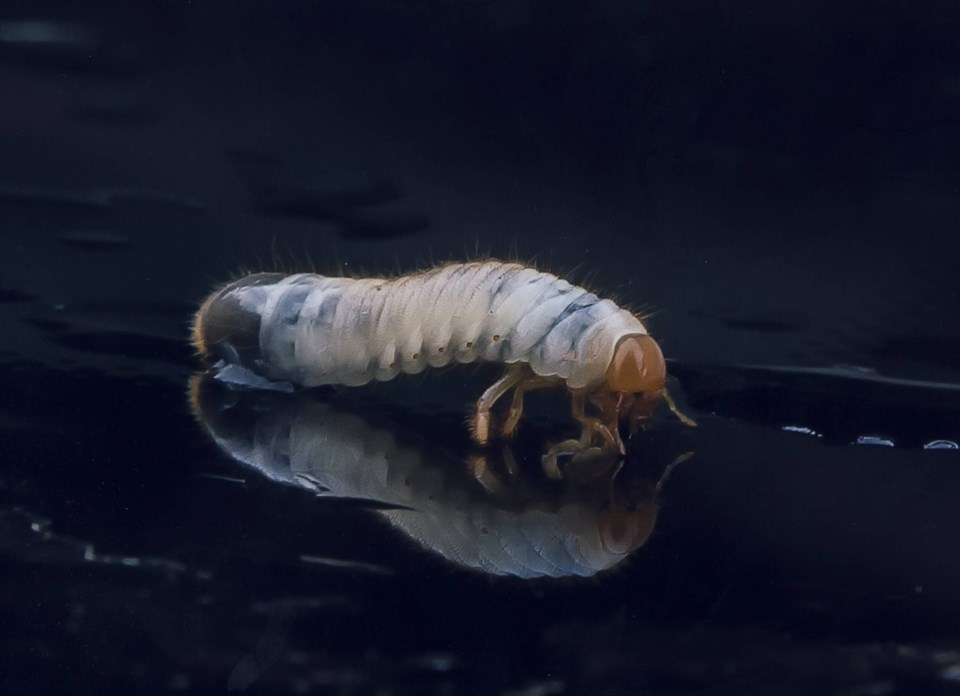Burnaby residents fed up with raccoons, crows and skunks feasting on the European chafer grubs in their lawns could be getting some help from the city next spring.
Linda Cappelletti, the North Burnaby resident featured in the NOW’s first story on the problem of raccoons tearing up lawns to eat the European chafer beetle grubs living underground (see “Raccoons feast on her grubby lawn”), recently spoke with a city staffer at the environment department who told her Burnaby was working on a solution to be tabled as part of the 2015 budget in April.
Coun. Dan Johnston confirmed this with the NOW, and added the city is aware of the damage the infestation of European chafer grubs is causing to lawns and city property across Burnaby.
“There are actually pockets of the city where they seem to have come back, and unfortunately it’s going to take another application of nematodes,” he said.
By the time the problem reached its height in 2004, the City of Burnaby was employing a city-wide nematode program. In a letter to the NOW, Johnston wrote that more than 19,000 square metres of city land were treated for European chafer beetles using nematodes. The program also offered residents nematodes for purchase at a subsidized price to rid their own lawns of the pesky grubs. It has been about five years since the city has run such a program.
“The last time we had a supply at Burnaby city hall and the day they were made available there was lineup that was going through the parking because people wanted to go in and get them,” he said.
Nematodes are roundworms that eat the European chafer grubs allowing homeowners and the city to deal with the problem in an organic way rather than using pesticides, which would contradict Burnaby’s pesticide use control bylaw.
“It controlled it quite a bit. I mean, it’s like any other infestation, some people treat it and some people don’t, and those that don’t make it a little harder for those that do,” Johnston said. “It’s a pretty organic way to treat it. It’s not like using pesticides.”
But any homeowners hoping for a solution to the problem right now are out of luck. Nematode application is best done in July and August when the eggs have hatched and the grubs are most vulnerable, according to the city’s website.
“And unfortunately we just missed that,” Johnston added.
Because of the resurgence of chafer grubs, Johnston said it is “very possible” another round of nematode programs will be brought up during budgeting in May 2015.
For more information on the European chafer beetle, visit tinyurl.com/EuroChafer.



